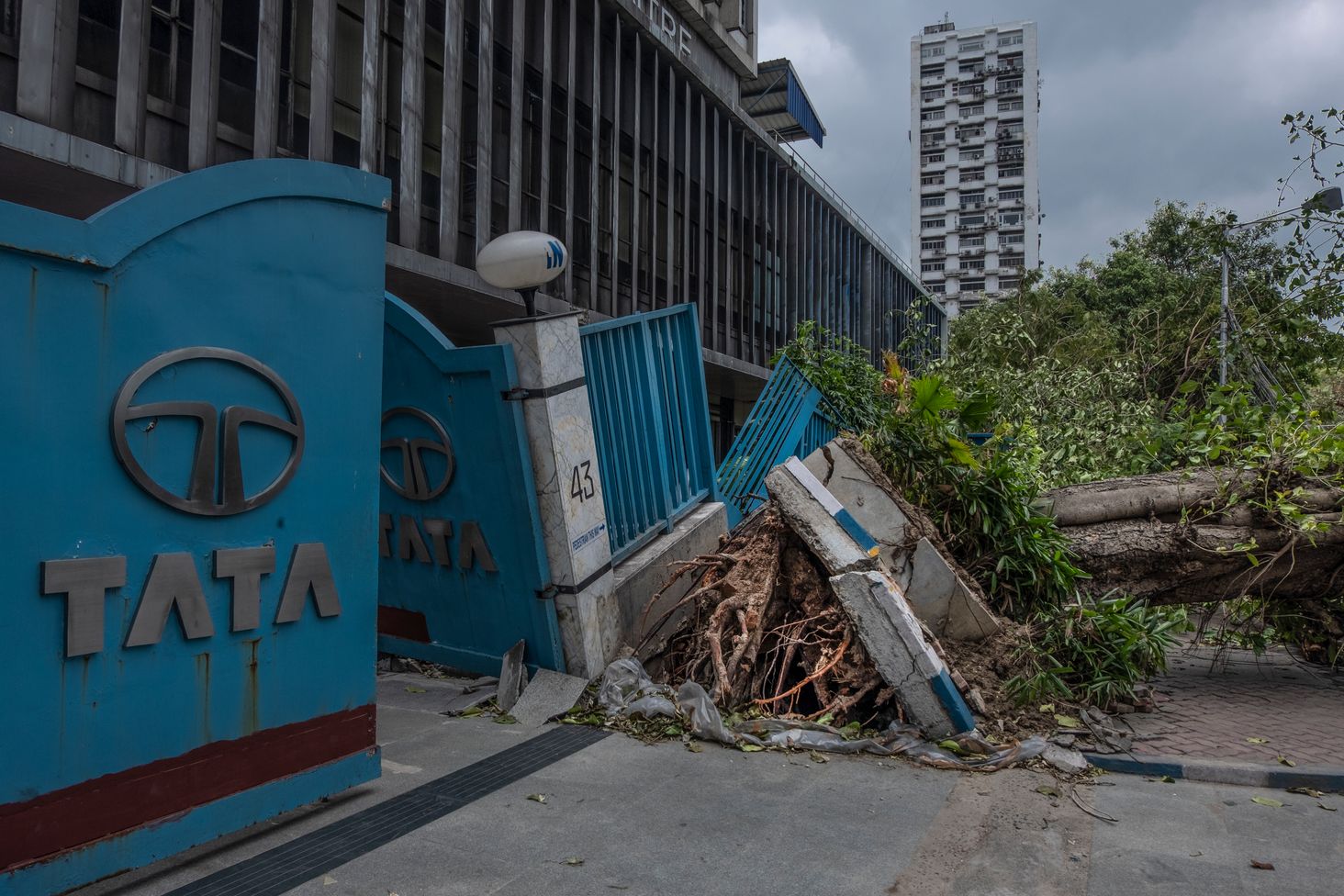It seems as if the year 2020 is no less than a Pandora’s Box: first, the coronavirus, and then the deadly cyclone Amphan.
On May 20, 2020, the city of joy (Kolkata) was hit by Amphan, one of the most destructive cyclones faced by Kolkata in decades. The next day, we woke up to a sight of total destruction: fallen electric poles and trees, blocked roads, dead bodies, and areas submerged due to water-logging.
“Though electricity problem is solved in some areas, the CESC [Calcutta Electricity Supply Corporation] people didn’t turn up here. The residents of the flat in Maity Para protested against electric failure, and only then CESC solved their problem, but till now, the electricity problem isn’t solved in our area,” said Master Da, a resident of Kalakpara, Alambazar.

A man standing next to a fallen tree at Alambajar. Photo: Koushik Das
However, locals say that the authorities visited the place, and they are hopeful that things will recover quickly for good.
In some areas, poor electricity services left people with no choice but to charge their devices in other localities and even in cyber cafes and railway stations.

Mobile phones being put on charge. Photo: Koushik Das
The locals in Kalakpara and many other places have also been facing water-related problems. Although the municipal corporation at the Baranagar is supplying water in these areas, many people have had to purchase water for everyday chores.
Also read: Black Market Water: What Post-Amphan Dystopia Looks Like
“Due to the cyclone, our area was heavily waterlogged. Dirty water was flowing through the kitchen and bathroom pipelines, and for days we had to purchase water even for activities as simple as washing hands,” says Sudeshna Dutta, a teacher and a resident of Bidhan Park, Dum Dum.

Bhowannipur. Photo: Koushik Das
Although all sections of society have suffered due to the storm, it’s the underprivileged who have suffered the most.
Deepali is a tea-seller at Kalakpara, Alambazar and is the sole bread earner of her family. She is completely shattered to see her damaged shop, which she built after taking a loan.
“First, came the lockdown. Initially, I didn’t know what to do but somehow I managed to keep my shop open all this while. Now, this storm has ruined everything. How would I be able to repay the money borrowed?”, she said.

Kids playing on the College Street. Photo: Koushik Das.
On being asked whether she got any financial support from the authorities, she said, “The
local councillor came and saw everything. He said that it would take time. He came, he saw and
went away.”
Apart from a poor water and electricity supply and debilitated houses, locals have also been facing network issues. One of them said, “No other network is working except Jio.” As a result, some teachers are facing a lot of problems with their online classes.
“As a teacher, I have to take online classes, but due to the poor network connection, I have to deal with a lot of issues,” says Dutta.
The popular spots such as the Calcutta University campus, College Street and South City, have almost become unrecognisable.

Books lying on the ground at the College street. Photo: Koushik Das.
But the city of joy is slowly returning to its old self.
The government has started the recovery work in various places of Kolkata and the Indian army was also deployed for the restoration purpose. Besides, the Odisha government has sent over 300 firemen from the state fire service to help with the reconstruction process.

Policemen engaged in the reconstruction work. Photo: Koushik Das.
However, the streets are not just filled with the army, but also with a bunch of angry citizens protesting the electricity and water supply failure, faulty network connection and so forth.
As a result, a lot of authorities have been facing hurdles with their reconstruction work.
“People are becoming impatient and are failing to understand the magnitude of the crisis. They are protesting the electric failure. This is not our fault. Even our forefathers haven’t seen a storm like this. People have taken electricity for granted. Just think about the Sunderban! Think about Medinipur! Think about the problems they are facing. People need to calm down,” said Sita Jaysyara, counselar at ward number 1, Ratanbabu road, Baranagar Bazaar.
Avik Patra, an employee at the Tata Consultancy Services, echoed the sentiment saying, “People need to understand that the city has never dealt a storm of this magnitude and hence instead of complaining, we must give some time to help things normalise. I live in a flat, and I have to clear buckets of water from my home. Just think about those who are not so privileged and the problems they are facing!”

Tata Steel office. Photo: Koushik Das
In some parts, citizens are also coming forward to help each other out. Students and indepedent organisations are doing various relief work and fundraisers. Locals are giving shelter to those who have suffered and are also distributing food.
After the horrible nightmare of Amphan, the city of joy hopes to see a new dawn.
Written by Ayan Dawn.
All images by Koushik Das.

